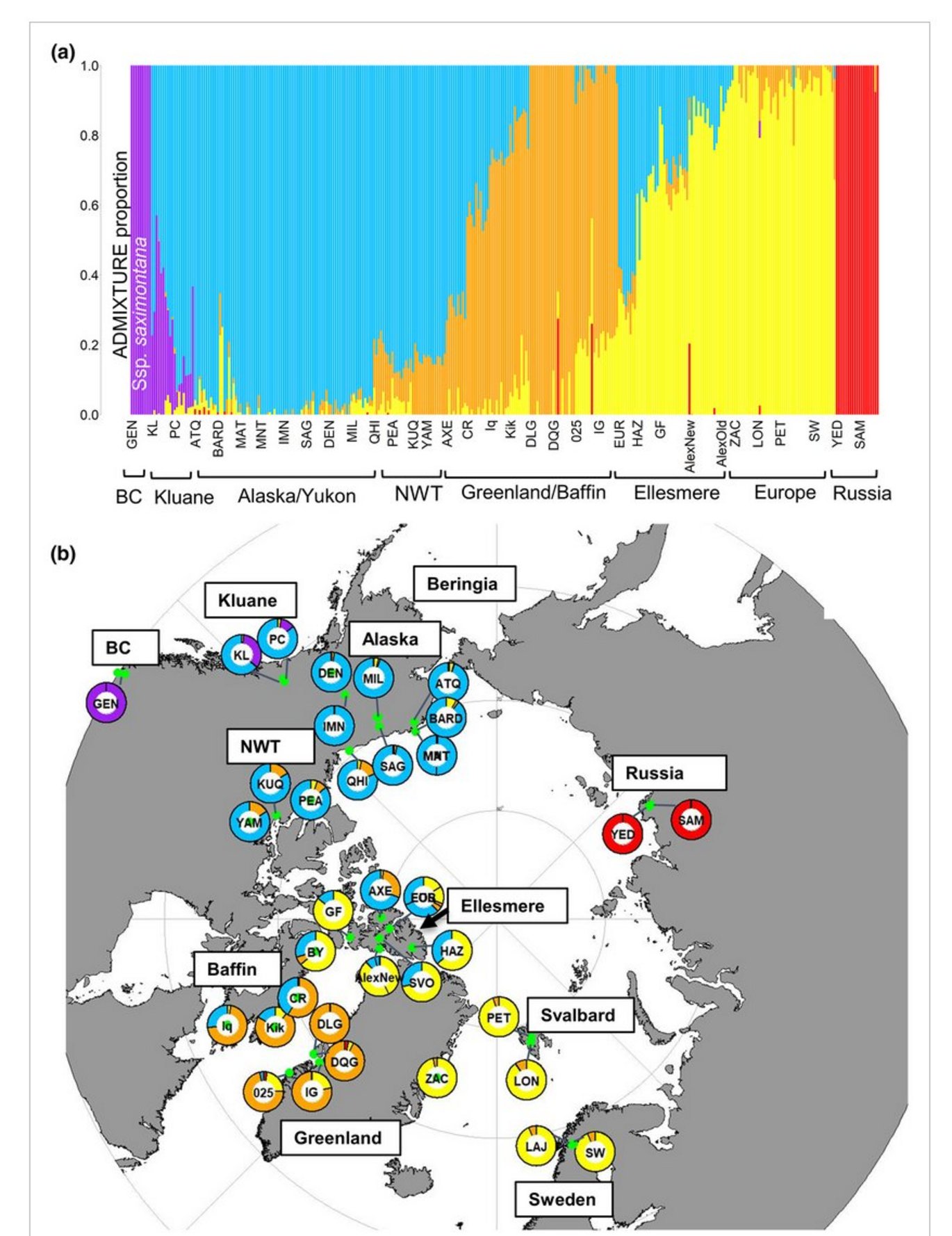Multiple Pleistocene refugia for Arctic Bell-Heather revealed with genomic analyses of modern and historic plants
New publication by Elphinstone C, Hernández F, Todesco M, Légaré JS, Cheung W, Sokoloff PC et al.

Abstract:
Abstract Aim Arctic plants survived the Pleistocene glaciations in unglaciated refugia. The number, ages, and locations of these refugia are often unclear. We use high-resolution genomic data from present-day and Little-Ice-Age populations of Arctic Bell-Heather to re-evaluate the biogeography of this species and determine whether it had multiple independent refugia or a single refugium in Beringia. Location Circumpolar Arctic and Coastal British Columbia (BC) alpine. Taxon Cassiope tetragona L., subspecies saximontana and tetragona, outgroup C. mertensiana (Ericaceae). Methods We built genotyping-by-sequencing (GBS) libraries using Cassiope tetragona tissue from 36 Arctic locations, including two ~250- to 500-year-old populations collected under glacial ice on Ellesmere Island, Canada. We assembled a de novo GBS reference to call variants. Population structure, genetic diversity and demography were inferred from PCA, ADMIXTURE, fastsimcoal2, SplitsTree, and several population genomics statistics. Results Population structure analyses identified 4–5 clusters that align with geographic locations. Nucleotide diversity was highest in Beringia and decreased eastwards across Canada. Demographic coalescent analyses dated the following splits with Alaska: BC subspecies saximontana (5 mya), Russia (~1.4 mya), Europe (>200–600 kya), and Greenland (~60 kya). Northern Canada populations appear to have formed during the current interglacial (7–9 kya). Admixture analyses show genetic variants from Alaska appear more frequently in present-day than historic plants on Ellesmere Island. Conclusions Population and demographic analyses support BC, Alaska, Russia, Europe and Greenland as all having had independent Pleistocene refugia. Northern Canadian populations appear to be founded during the current interglacial with genetic contributions from Alaska, Europe and Greenland. We found evidence, on Ellesmere Island, for continued recent gene flow in the last 250–500 years. These results suggest that a re-analysis of other Arctic species with shallow population structure using higher resolution genomic markers and demographic analyses may help reveal deeper structure and other circumpolar glacial refugia.
